Key, William Shaffer, born 06-10-1889, in Dudleyville,  Tallapoosa County, Alabama, United States. the son of Cullen R. Calloway “Callie” Key and Hadassah Hassie L, born Fargason, Key and grandson of William R. Wilburn Key and Elizabeth “Betsey” Ann, born Henderson, Key and Thomas Benjamin Fargason and Laura W. born Dunson Fargason.
Tallapoosa County, Alabama, United States. the son of Cullen R. Calloway “Callie” Key and Hadassah Hassie L, born Fargason, Key and grandson of William R. Wilburn Key and Elizabeth “Betsey” Ann, born Henderson, Key and Thomas Benjamin Fargason and Laura W. born Dunson Fargason.
William was married to Irene Genevieve Davis Key 05-05-1914 in Wewoka, Seminole County, Oklahoma and they had two sons and one daughter. Mary “Genevieve” Key, wife of William Harper. Robert Carleton Key, husband of Mavis Parker. Their older son, Robert Carleton Key (1926–1988).
A member of the Oklahoma National Guard,  he was called into federal service and participated in combat on the Western Front during World War I
he was called into federal service and participated in combat on the Western Front during World War I  as the division quartermaster of 7th Division under command of Brigadier General Charles Henry “Charlie” Barth. (1903-1943)
as the division quartermaster of 7th Division under command of Brigadier General Charles Henry “Charlie” Barth. (1903-1943) 

Following the war, Key returned to the National Guard, also holding several civil assignments including warden of the Oklahoma State Penitentiary, chairman of the Oklahoma Pardon and Parole Board, director of the Security National Bank, and state administrator of the Oklahoma Works Progress Administration.
Key returned to active service in September 1940 as commanding General of the 45th Infantry Division,  later embarking overseas for duty as Provost Marshal General of the European Theater of Operations.
later embarking overseas for duty as Provost Marshal General of the European Theater of Operations.
Key held another additional duty as acting commanding General, V Corps  from January 1942 to May 1942 and embarked for Europe for duty as provost marshal general of the European Theater of Operations with headquarters in London, England. The Provost Marshall function in the ETO was one of 18 Special Staff Sections of Communications Zone, ETO under Lieutenant General John Clifford Hodges “Jesus Christ Himself” Lee.
from January 1942 to May 1942 and embarked for Europe for duty as provost marshal general of the European Theater of Operations with headquarters in London, England. The Provost Marshall function in the ETO was one of 18 Special Staff Sections of Communications Zone, ETO under Lieutenant General John Clifford Hodges “Jesus Christ Himself” Lee. 
 While in this capacity, he established the school for Military Police and during a thirty-day course, students were trained mostly in the map reading; methods of patrolling towns liberated from Germany; guarding of the prisoners of war and other.
While in this capacity, he established the school for Military Police and during a thirty-day course, students were trained mostly in the map reading; methods of patrolling towns liberated from Germany; guarding of the prisoners of war and other.
On 6 June 1944, V Corps assaulted Omaha Beach,  Normandy. Corps soldiers then broke out from the beachhead, liberated Paris and Sedan, Ardennes, and raced to the German border. After liberating Luxembourg City, V Corps fought in the Battle of the Bulge, captured Leipzig, made first contact with the Red Army at Torgau, and, south in Czechoslovakia, liberated Plzeň by May 1945.
Normandy. Corps soldiers then broke out from the beachhead, liberated Paris and Sedan, Ardennes, and raced to the German border. After liberating Luxembourg City, V Corps fought in the Battle of the Bulge, captured Leipzig, made first contact with the Red Army at Torgau, and, south in Czechoslovakia, liberated Plzeň by May 1945.
The battle for Omaha Beach was fierce and bloody for the V’s army ; both assaulting divisions suffered heavy casualties. The defending 352nd Infantry Division  under command of General Hugo Gottfried “Hujo Rabatz”
under command of General Hugo Gottfried “Hujo Rabatz”  , was a rebuilt Russian Front formation whose ranks included many combat veterans. The German troops were posted in strongly built and well-sited fighting positions with powerful artillery support. For many hours the Americans were pinned down by intense machine gun, mortar and artillery fire. Because of the danger of hitting friendly troops, US naval gunfire support was of limited effectiveness until destroyers approaching close inshore were able to identify and engage enemy targets. Only late in the day were the German defenses breached and the American hold on Bloody Omaha, as it came to be called, made secure. More than 2,000 US troops were killed, wounded or listed as missing in action; German casualties totaled around 1,200. But the Allies were ashore along the entire invasion front, and the liberation of Europe had begun. General Kraiss suffered a severe wound on 02-08-1944, near Saint-Lô, and died on 6 August. He was posthumously awarded the Knight’s Cross of the Iron Cross with Oak Leaves
, was a rebuilt Russian Front formation whose ranks included many combat veterans. The German troops were posted in strongly built and well-sited fighting positions with powerful artillery support. For many hours the Americans were pinned down by intense machine gun, mortar and artillery fire. Because of the danger of hitting friendly troops, US naval gunfire support was of limited effectiveness until destroyers approaching close inshore were able to identify and engage enemy targets. Only late in the day were the German defenses breached and the American hold on Bloody Omaha, as it came to be called, made secure. More than 2,000 US troops were killed, wounded or listed as missing in action; German casualties totaled around 1,200. But the Allies were ashore along the entire invasion front, and the liberation of Europe had begun. General Kraiss suffered a severe wound on 02-08-1944, near Saint-Lô, and died on 6 August. He was posthumously awarded the Knight’s Cross of the Iron Cross with Oak Leaves ![]() on 11-08-1944.
on 11-08-1944.
William Key served in this capacity under a succession of Theater Commanders, including Dwight David “Ike”. Eisenhower, and then Lieutenant General Frank Maxwell Andrews 
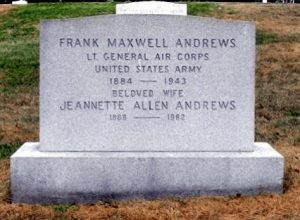 until the beginning of May 1943, when the plane carrying Andrews crashed on Iceland. Key then served as acting Commanding General, United States Army Europe for five days, before Lieutenant General Jacob Loucks “Jamie” Devers
until the beginning of May 1943, when the plane carrying Andrews crashed on Iceland. Key then served as acting Commanding General, United States Army Europe for five days, before Lieutenant General Jacob Loucks “Jamie” Devers 
 arrived from the States and relieved him. Key then resumed his duties as provost marshal and was succeeded by Major General Milton Atchison Reckord
arrived from the States and relieved him. Key then resumed his duties as provost marshal and was succeeded by Major General Milton Atchison Reckord 
 in June that year. Reckord survived the war and died 08-09-1975 (aged 95) in Fort Howard, Maryland.
in June that year. Reckord survived the war and died 08-09-1975 (aged 95) in Fort Howard, Maryland.
Key then assumed duty as commanding general, Iceland Base Command and was responsible for the defense of the island and administration of garrison of 40,000 soldiers. He remained in that assignment until December 1944 and received numerous decorations including Army Distinguished Service Medal, ![]() Legion of Merit,
Legion of Merit, ![]() Bronze Star Medal
Bronze Star Medal ![]() and Army Commendation Medal.
and Army Commendation Medal. ![]() . Key was also appointed Knight of the Order of the Bath
. Key was also appointed Knight of the Order of the Bath ![]() by the United Kingdom and Knight Commander of the Order of the Falcon by the Government of Iceland.
by the United Kingdom and Knight Commander of the Order of the Falcon by the Government of Iceland. ![]()
In January 1945, Key was ordered to Hungary and appointed chief of the Military Control Commission. While in this capacity, he was responsible for the directing of the repatriation of displaced persons; supervision of the demobilization of Hungarian armed forces; return of property taken by Germany and regulation and supervision of the execution of the armistice terms. Key was succeeded by Brigadier General George Hatton Weems 
 in August 1946 and received his second Army Distinguished Service Medal for his service.
in August 1946 and received his second Army Distinguished Service Medal for his service.
Key was subsequently ordered back to the United States and retired from active duty. He remained active in Oklahoma National Guard as secretary to adjutant General until October 1949 and received Oklahoma Distinguished Service Medal for his long meritorious service with the guard. He then assumed job as director of Oklahoma Natural Gas Company and simultaneously served as president of the board of directors of Oklahoma Historical Society.
Death and burial ground of Key, William Shaffer.

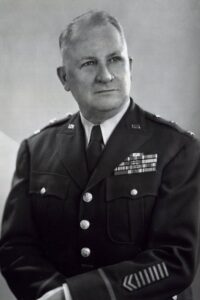
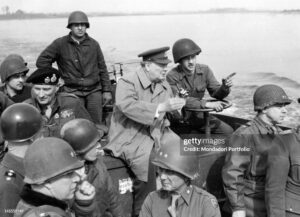
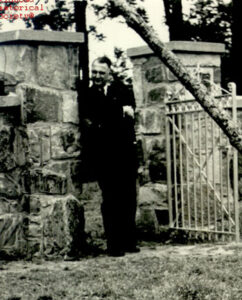
Major General William S. Key died on 05-01-1959, aged 69, in Oklahoma City, Oklahoma, and was buried at Memorial Park Cemetery there. 13400 N Kelley Ave, Oklahoma City, OK 73131,United States.
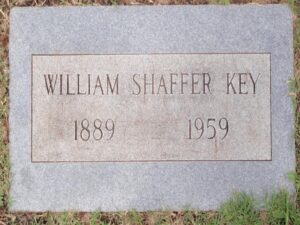
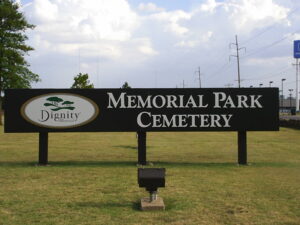






















Leave a Reply